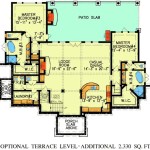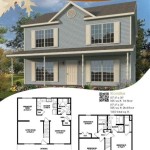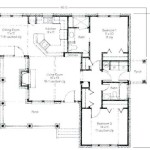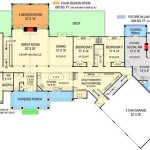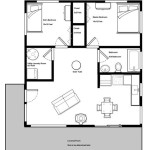Single Story Low Country House Plans: A Comprehensive Overview
Single story Low Country house plans represent a distinctive architectural style deeply rooted in the coastal regions of the southeastern United States. Characterized by functionality, elegance, and a harmonious integration with the surrounding environment, these designs offer a unique blend of aesthetic appeal and practical living solutions. Understanding the key features, advantages, and considerations involved in choosing a single story Low Country house plan is crucial for prospective homeowners seeking to embrace this timeless style.
The Low Country style is particularly well-suited for single-story construction, as it naturally emphasizes horizontal lines and sprawling footprints. This allows for an enhanced connection to the outdoors, a key element in the lifestyle associated with Low Country living. The absence of stairs also makes these homes ideal for individuals with mobility limitations, families with young children, and those seeking an accessible and aging-in-place friendly residence.
Key Characteristics of Single Story Low Country House Plans
Several defining characteristics distinguish single story Low Country house plans from other architectural styles. These features contribute to the overall aesthetic and functional appeal of the homes, reflecting the region's climate, history, and cultural heritage. Examining these traits provides a deeper understanding of what makes this style unique and desirable.
Spacious Porches: Perhaps the most iconic element of Low Country architecture, wide and deep porches are prevalent in single story designs. These porches are often wraparound or extend across the front and rear of the house, providing ample space for outdoor relaxation, socializing, and enjoying the surrounding scenery. The porches are typically screened or feature ample overhangs to provide shade and protection from insects.
Elevated Foundations: Although single story structures by definition lack a second story, Low Country homes often incorporate elevated foundations. This is partly a practical consideration, as it helps to protect the home from potential flooding in coastal areas. The elevation also provides improved ventilation beneath the house, reducing the risk of moisture damage and insect infestations. Visually, the elevated foundation adds a sense of grandeur and permanence to the structure.
Open Floor Plans: Single story Low Country homes often feature open floor plans that promote a sense of spaciousness and connectivity. The kitchen, living room, and dining area are typically integrated into a single, flowing space, making it ideal for entertaining and family gatherings. This design approach also allows for improved natural light penetration and ventilation throughout the house.
Large Windows and Doors: Maximizing natural light and ventilation is a key priority in Low Country design. Single story homes typically feature large windows and doors, often with transoms above, to allow ample sunlight to enter the interior spaces. French doors and sliding glass doors are commonly used to provide easy access to the porches and outdoor areas, blurring the lines between indoor and outdoor living.
Gable Roofs with Wide Overhangs: Gable roofs, with their characteristic triangular shape, are a common feature in Low Country architecture. The wide overhangs provide shade and protection from the elements, reducing energy consumption and preventing water damage to the exterior walls. The roof pitch is typically moderate, allowing for efficient water runoff without compromising the aesthetic appeal of the house.
Exterior Materials: Traditional Low Country homes often feature natural and durable exterior materials, such as wood siding, brick, and stucco. These materials are chosen for their ability to withstand the harsh coastal climate and their aesthetic appeal. Wood siding is often painted in light colors, such as white, cream, or pastel shades, to reflect sunlight and keep the house cool. Brick is commonly used for foundations, chimneys, and other architectural details, adding a touch of elegance and durability.
Advantages of Choosing a Single Story Low Country House Plan
Opting for a single story Low Country house plan offers numerous advantages, both in terms of practicality and lifestyle. These benefits contribute to the overall appeal and desirability of this architectural style, particularly for those seeking a comfortable and convenient living environment.
Accessibility and Aging in Place: The absence of stairs makes single story homes ideal for individuals with mobility limitations, families with young children, and those planning to age in place. This design eliminates the risk of falls and provides easy access to all areas of the house. Features such as wider doorways, grab bars in bathrooms, and roll-in showers can be easily incorporated into the design to further enhance accessibility.
Ease of Maintenance: Single story homes are generally easier and less expensive to maintain than multi-story houses. Exterior maintenance, such as painting, window cleaning, and roof repairs, can be completed without the need for ladders or scaffolding. Interior maintenance is also simplified, as there are no stairs to navigate when carrying furniture or cleaning supplies.
Stronger Connection to the Outdoors: The horizontal layout of single story Low Country homes allows for a seamless connection to the surrounding landscape. The large porches and numerous windows and doors provide easy access to the outdoors, blurring the lines between indoor and outdoor living. This is particularly appealing for those who enjoy spending time in their gardens, entertaining guests outdoors, or simply relaxing in the fresh air.
Energy Efficiency: While the footprint of a single story home can sometimes lead to increased roof area, which can impact heating and cooling costs, careful design considerations can mitigate these effects. Proper insulation, energy-efficient windows and doors, and strategic placement of porches and trees can help to reduce energy consumption and lower utility bills. The single story layout also allows for easier installation of solar panels and other renewable energy systems.
Cost-Effectiveness: While the initial construction cost of a single story home can vary depending on the size, materials, and location, it is often more cost-effective than building a multi-story house. The absence of stairs and the simplified structural design can reduce construction time and labor costs. Furthermore, the ease of maintenance and lower energy consumption can result in long-term cost savings.
Considerations When Selecting a Single Story Low Country House Plan
While single story Low Country house plans offer numerous advantages, it is important to consider certain factors before making a final decision. Evaluating these considerations will help to ensure that the chosen design meets the specific needs and preferences of the homeowner.
Lot Size and Shape: Single story homes typically require a larger lot than multi-story houses, as the entire living space is spread out on a single level. It is important to ensure that the lot is large enough to accommodate the desired size of the house, as well as any outdoor features, such as gardens, patios, and pools. The shape of the lot can also influence the design of the house, as certain layouts may be better suited for specific lot configurations.
Privacy Concerns: Due to their horizontal layout, single story homes may be more susceptible to privacy concerns than multi-story houses, particularly in densely populated areas. Careful landscaping, such as planting trees and shrubs, can help to create a natural barrier and provide added privacy. The placement of windows and doors should also be considered to minimize visibility from neighboring properties.
Resale Value: While Low Country architecture is generally popular in the southeastern United States, the resale value of a single story home may vary depending on the location and market conditions. In some areas, multi-story houses may be more desirable due to their efficient use of space. It is important to research the local real estate market and consult with a real estate professional to assess the potential resale value of a single story Low Country home.
Design Customization: While there are numerous pre-designed single story Low Country house plans available, many homeowners prefer to customize their homes to reflect their personal style and preferences. Working with an architect or designer to modify an existing plan or create a custom design can help to ensure that the house meets the specific needs of the homeowner. Customization options may include altering the floor plan, changing the exterior materials, or adding unique architectural details.
Local Building Codes and Regulations: Before starting construction, it is important to research and comply with all applicable local building codes and regulations. These regulations may pertain to zoning restrictions, setback requirements, building permits, and environmental protection. Failure to comply with these regulations can result in costly delays and penalties.
In conclusion, single story Low Country house plans provide a compelling option for those seeking a comfortable, accessible, and aesthetically pleasing home. By carefully considering the key characteristics, advantages, and potential challenges associated with this architectural style, prospective homeowners can make an informed decision and create a living space that perfectly reflects their lifestyle and preferences.

Low Cost Single Story 4 Bedroom House Floor Plans Country Farm 2200 Sf Basement One

Plan W15035nc Narrow Lot Low Country Cottage Vacation Beach Photo Gallery House Plans Home Floor Layout

Beautiful Small Country House Plans With Porches Houseplans Blog Com

Low Country Architecture Beach House Plans From Home Designs

Our Best Tiny Country House Plans And Small Designs

Low Country Architecture Beach House Plans From Home Designs

4 Bedroom House Plans With Photos Single Story Nethouseplansnethouseplans Page 2

10 Small House Plans With Open Floor Blog Homeplans Com

Small House Plans Economical Floor

Bay Point Cottage 16391 House Plan Design From Allison Ramsey Architects Porch Plans Country Retirement

